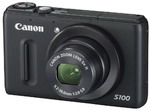Sunday, November 12, 2006
KenRockwell.com: Nikon D200 Image Quality Settings
Posted by Jason Dunn in "ARTICLE" @ 12:00 PM
I enjoy Ken Rockwell's writing because he often challenges the norms that we all assume to be true. If you have a big storage card, it's best to shoot your photos in the highest resolution, with the least compression, right? Well, maybe not. Ken shoots some photos and does comparisons here that may surprise you - I did some tests of my own a few months back, comparing JPEG Fine to JPEG Normal, and was unable to discern a difference with any image I shot, even at 200% zoom. So since then, when I shoot JPEG, I leave it at JPEG Normal. This article is a must-read for any digital photographer, even if you own a different digital camera. I tend to slightly tweak most images, even JPEGs, after shooting, so I don't know that I'd ever want to go down to JPEG Basic, but even after one re-save of a JPEG Normal file I have yet to see any artifacts. Sometimes you can make your life easier by second-guessing your assumptions!
I take issue with one of Ken's recommendations though: dropping the resolution of the image. Near-invisible compression artifacts are one thing, but a smaller image at a lower resolution is quite another. Twenty years from now we may be staring at 12,000 by 10,000 pixel resolution monitors, so having images with the largest "physical" pixel dimensions is important. I look back now at images I took with my first digital camera, a Kodak DC265, and the 1152 x 768 resolution images don't even fill the screen of any of my monitors.












